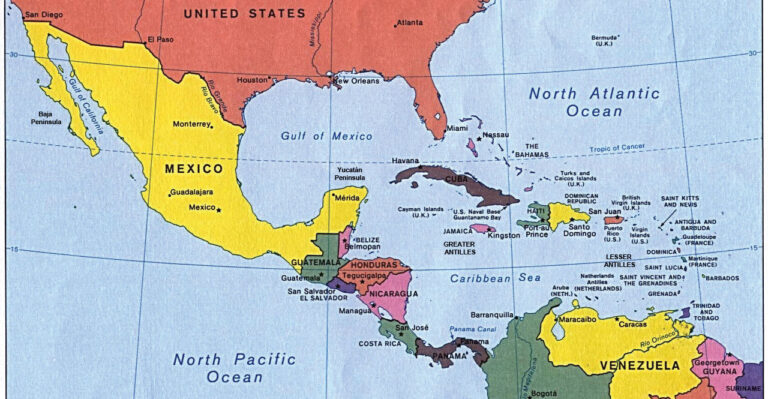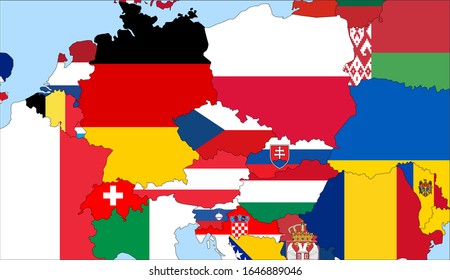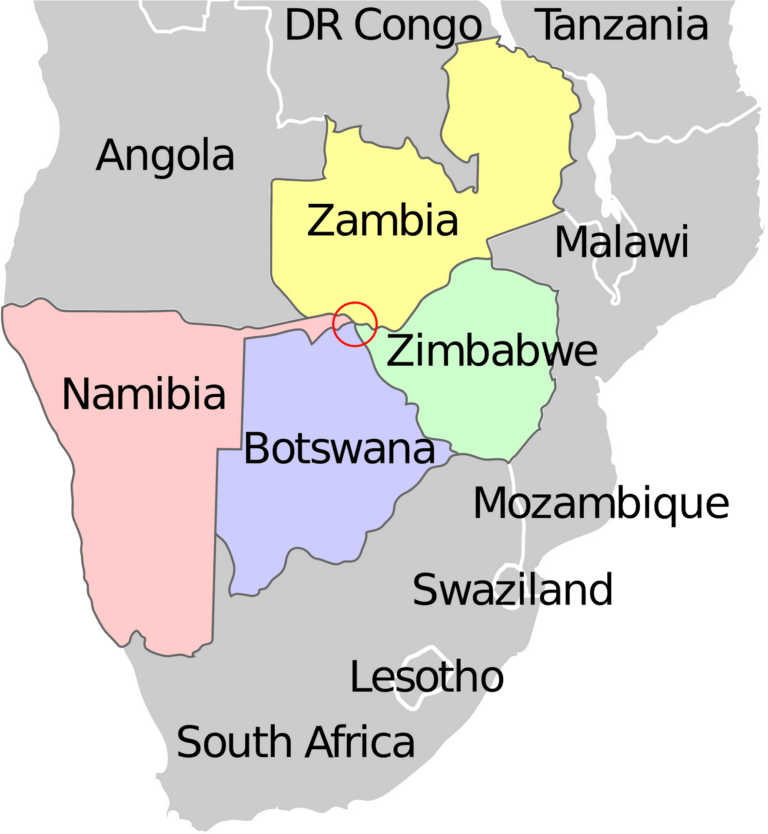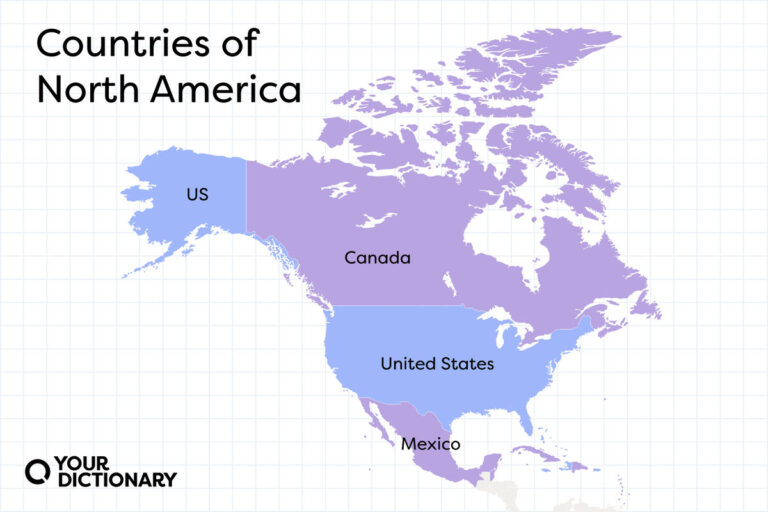Guinea-Bissau Neighbouring Countries Overview
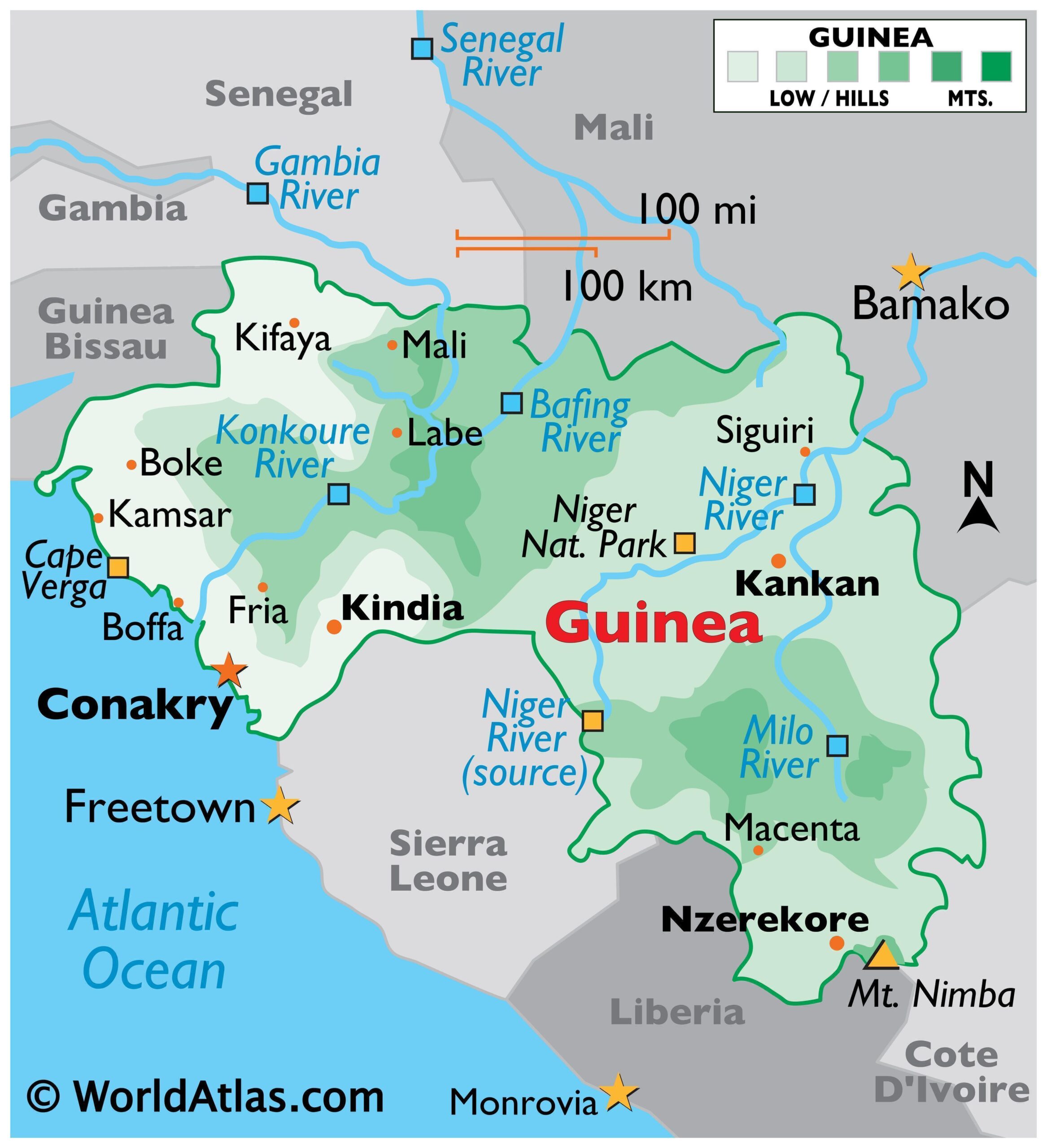
Guinea-Bissau’s Neighboring Countries
Nestled between the Atlantic Ocean and its two next-door neighbors, Guinea-Bissau rubs shoulders with Senegal up north and Guinea to the east and south. It’s a cozy little spot on West Africa’s coast that keeps things interesting with these important borders.
Senegal: Northern Border
Senegal sits right across the top of Guinea-Bissau, with the two countries sharing a 338-kilometer hug of a boundary. This line in the sand is more than just geographical—it’s a part of their history together, telling stories of past and present ties.
Senegal boasts a treasure trove of culture and achievements, enhancing a lively connection with Guinea-Bissau. Together, they tackle regional challenges, punch up trade, bolster security, and swap rich cultural stories like old friends at a neighborhood block party.
| Country | Length of Border |
|---|---|
| Senegal | 338 km |
Guinea: Eastern and Southern Borders
Down to the south and east, Guinea stands as Guinea-Bissau’s extensive 386-kilometer buddy. Their border isn’t just a line—it’s a bridge of economic and cultural ties that they’ve both benefited from over the years.
Guinea’s got plenty to offer with its natural riches and teeming ecosystems, setting the stage for collaboration on economic adventures. They’ve got cross-border trade down to a science and team up on environmental efforts like superheroes of the ecological world.
| Country | Length of Border |
|---|---|
| Guinea | 386 km |
If your taste for global borders hasn’t been satisfied yet, check out more neighborly tales with our articles on the Dominican Republic’s borders, Ecuador’s neighboring scenes, and the borderlands of Egypt.
Historical Context
Refugee Movements
Guinea-Bissau and its neighbors have a history deeply marked by folks on the move, trying to find a safe place. During the battle for independence from 1963 to 1974, a hefty chunk, like one-third, of Guinea-Bissau’s countryside crowd hightailed it to nearby countries to escape the chaos. These escapes left noticeable dents in the population, switching up the cultural scene in Guinea-Bissau and its friendly (and sometimes not-so-friendly) neighbors.
Back in the day, from the 15th all the way through the 19th century, loads of folks were snagged and shipped from Guinea-Bissau to places like Cape Verde, Cuba, and up to Brazil, ending up as slaves or under tight clothes of indentured servants. This sad chapter left a big ol’ mark on cultures and peoples there, one that still echoes today.
| Period | Destination | Number of People |
|---|---|---|
| 15th – 19th Century | Cape Verde, Cuba, Northern Brazil | Thousands |
| 1963 – 1974 | Senegal, Guinea | One-third of rural population |
Colonial Impositions
The era when the colonizers called the shots in Guinea-Bissau was rough. They pulled a bunch of tricks to keep the locals in line, big time shaking up the political and social scene. One of their brainwaves during the freedom fight was to herd folks into these isolated spots (aldeamentos) to clip the wings of nationalist movements. This was a play at tearing resistance apart and keeping control under a tight lid.
These colonial masterminds didn’t just meddle locally. Their game plans contributed to the shaky yards Guinea-Bissau now finds itself in, and they stirred the pot in neighborly relations too. The blueprints they left behind built some of the problems that still shuffle the decks in Guinea-Bissau and around. If you want the big picture, peek at what’s been going on with neighbors like equatorial guinea and guinea. This intertwined history stuff really paints a clearer story of the ties and trials these nations still reel from today.
Socio-Political Realities
Fragility and Wobbles
Guinea-Bissau’s journey since breaking free from Portugal in ’74 has been more than a bit rocky. Picture a nation caught in repeat mode with coups and political shakeups that have left everyone on edge (World Bank). This constant turmoil has stalled its economic engine from running smoothly.
Flip-flopping governments, with a sprinkle of military mischief, have created an air of unpredictability. Such political chaos has been a hurdle to thoughtful governance, making it tough to nail down any plans for lasting growth. As a result, prospective investors think twice, and the strain on the country’s resources gets heavier, piling up even more challenges.
Friendship for Progress
But not all clouds are rain-heavy — Guinea-Bissau’s got some pals helping out to patch up its economy and social setup. Heavyweights like the EU, EIB, and ECOWAS have stepped in with support. These alliances roll out the red carpet for initiatives like poverty busting, making roads and schools, and tweaking governance.
| Helping Hand | Focus |
|---|---|
| EU | Governance, healthcare, and learning |
| EIB | Building stuff, economic jumps |
| ECOWAS | Regional peace, business teamwork |
| World Bank | Big projects, money help |
On the international stage, the World Bank plays a big role, throwing in funds and backing projects that target Guinea-Bissau’s tricky socio-economic puzzles. Together, these efforts dive into healthcare, classrooms, and other services that matter.
For those with a keen eye on the socio-political scenes of other places, why not peek into the neighbors of Ecuador and Ethiopia?
With these friendships, Guinea-Bissau hopes to bring a bit of calm to its political storm and set the stage for some real, lasting progress.
Geographical Features
The Bijagós Archipelago
Just off the Atlantic coast of Guinea-Bissau, you’ll find the Bijagós Archipelago—a sprawling collection of 88 islands that paint a stunning natural portrait World Bank). These islands aren’t just eye candy; they’re a biodiversity hotspot filled with vibrant bird species and marine life that’ll have any nature enthusiast buzzing.
Isolated and ecologically varied, the Bijagós Archipelago is a funky mix of biology and culture you won’t find elsewhere. It’s not just about the plants and critters living there; it’s the unique dance between humans and nature that makes this place tick. So much so, parts of the Bijagós have earned UNESCO Biosphere Reserve status, spotlighting the importance of its ecosystems and the critters who call them home.
Coastal Boundaries
Guinea-Bissau’s coastal boundaries do a lot more than just look pretty. They stretch for about 350 kilometers along that big ol’ Atlantic Ocean, shaping climate, livelihoods, and basically the nation’s whole vibe. It’s a fisherman’s paradise out there, and many folks around here make their living off those salty waters.
Now, toss in a diverse crowd with religious flavors of 45.1% Muslim, 22% Christian, and 14.9% local religions, and you’ve got yourself a melting pot influenced by the ebb and flow of coastal trade and chats. Throw in some evangelical churches and waves from conservative Muslim realms, and you’ve got yourself an epic mix of cultural beats shaping the coastal scene.
Together, these coastal treasures and the Bijagós Archipelago make up the heart and soul of Guinea-Bissau. It’s not merely scenic or economic—it’s about how they weave into the nation’s story like threads in a fine tapestry. For a broader picture on how neighboring countries influence each other, check out our pieces on dominican republic neighboring countries and equatorial guinea neighboring countries.
Economic Challenges and Initiatives
Poverty and GDP
Guinea-Bissau’s handling a tough economic scene. It’s got one of the tiniest GDPs out there, and folks aren’t exactly living large—over two-thirds are scraping by under the poverty line. These numbers don’t just pop up outta nowhere; they tell the tale of the country’s shaky economy.
| Metric | Statistic |
|---|---|
| Per Capita GDP | Among the lowest globally |
| Population Below Poverty Line | More than 66% |
What’s running the economic show? Mainly farming, with cashew nuts being the big cheese in what the country makes. To really get why things are the way they are, you’ve gotta dig into the political stuff driving poverty and peep at how folks from around the globe are stepping in to help.
International Collaborations
Even with these economic hiccups, Guinea-Bissau’s got some friends lending a hand. Helping out are pals like the European Union (EU), the European Investment Bank (EIB), and the Economic Community of West African States (ECOWAS) (World Bank).
A key project is “Terra Ranka” (A fresh start), all about kicking things into gear with some international backup—from big players like the European Union, UNDP, and the African Development Bank.
| Organization | Role |
|---|---|
| European Union (EU) | Financial help and building things up |
| European Investment Bank (EIB) | Economic boosts |
| ECOWAS | Regional growth plans |
| UNDP | Mapping out and cutting poverty |
| African Development Bank | Money and know-how |
The natural side of things counts too—forests and big water sources are cash cows. They rank pretty high on the important stuff list for moolah in the kudos department.
Connecting the economic dots between poverty, GDP, and who’s helping out paints a picture of Guinea-Bissau’s financial deal, along with its neighboring buddies. For more scoop about nearby geography and relations, check out the parts on dominican republic neighboring countries and gambia neighboring countries.
Socio-Cultural Dynamics
Religious Diversity
Guinea-Bissau stands out with its mix of religious traditions. The folks here are a blend: around 45.1% are Muslims, 22% identify as Christians, and about 14.9% stick to local spiritual practices. There’s been a recent uptick in the presence of Evangelical churches and influences from some conservative Muslim nations, shaking up the spiritual scene a bit.
You can picture it like this:
| Religion | Percentage (%) |
|---|---|
| Muslim | 45.1 |
| Christian | 22 |
| Local Religions | 14.9 |
Curious about how other countries manage a mix like this? Our article on ethiopia neighboring countries might catch your eye.
Political Clientelism
Politics in Guinea-Bissau has its quirks, especially when we talk clientelism. The African Party for the Independence of Guinea and Cape Verde (PAIGC), Party of Social Renewal (PRS), and MADEM-G15 are less about policies and more about who’s got the style and swagger to lead. The charm of individual leaders often grabs more attention than the party’s plans or programs.
Grasping how clientelism works can help you better understand the political scene, and you might find some similarities with other places. Fancy a broader look? Dive into our articles on ecuador neighboring countries and el salvador neighboring countries.
If political maneuvers are your thing, our write-up on ghana neighboring countries could also be a good read.

